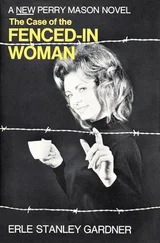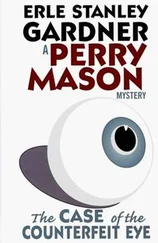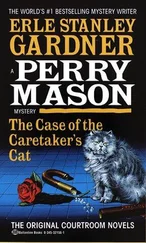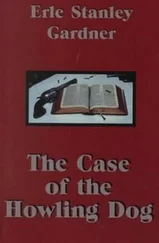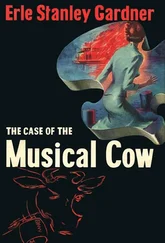“The Court is not concerned with criticisms or with press conferences,” Judge Hobart interrupted. “If you wish to put on other evidence after having rested your case, the Court will consider this a motion to reopen the case. Is there any objection from the defence?”
“None whatever,” Mason said.
Hastings said triumphantly, “Call Sheriff Jewett to the stand.
“You have already been sworn, Sheriff. There is no need for you to take the oath again. Just be seated.
“Now, Sheriff, directing your attention to a so-called press conference which occurred yesterday afternoon, did you hear the defendant make any statement at that press conference?”
“I did.”
“Did that statement have any reference to the defendant’s actions on the night of the tenth?”
“It did.”
“What did she say, as nearly as you can recall, about the shooting?”
“She said that she had a gun in her purse, that she took the gun from her purse and killed Willmer Gilly, that she then jumped overboard from the yacht on which the killing took place, that at that time she was carrying a purse which she dropped — she thought she dropped it after she struck the water and she was holding the gun which she dropped as she went overboard. She said she thought she heard it hit the deck and then splash in the water.”
“Now then,” Hastings said, “after hearing that story, did you go to the place where she had indicated the shooting took place at the harbour?”
“I did.”
“Did you have anyone with you?”
“I did. I had a trained diver.”
“And what did this diver do under your direction?”
“He explored the bottom of the bay.”
“What did he find, if anything?”
“He found a woman’s purse.”
“I show you a woman’s purse,” Hastings said, “which contains some identification cards and a driving licence, rather water-soaked but still legible, in the name of Phyllis Bancroft, and ask you if you have seen this before?”
“I have. That is the purse which the diver handed me.”
“We ask that that be introduced as an appropriate exhibit,” Hastings said.
Judge Hobart frowned thoughtfully as he looked at Mason. “Are there any objections?”
“None whatever, Your Honour.”
“Now then, did the diver uncover anything else?”
“He did.”
“What?”
“A gun.”
“Can you describe that gun?”
“Yes, sir. That was a .38 calibre Smith and Wesson six-shooting revolver, No. 133347. It had five loaded shells in it and one exploded cartridge, and an examination of the records showed the gun had been purchased by Harlow Bissinger Bancroft, the husband of the defendant.”
“Did you make any ballistic tests with that gun?”
“I did, yes, sir.”
“And make any comparison of the test bullets fired from that gun, with the fatal bullet?”
“Yes, sir.”
“What was the result?”
“The tests showed this revolver was the weapon which fired the fatal bullet.”
“Now then,” Hastings went on, “in the course of the press conference there were some criticisms which were levelled at your office for not having marked the exact location where the boat was discovered on the afternoon of the eleventh, and not having explored the bottom near the place where the boat was found. Did you make any attempt subsequently to locate the exact place where that boat was found?”
“I did. Yes, sir.”
“And what was the result with reference to being able to locate the exact spot where the boat had been anchored?”
“I found the exact spot.”
“How?”
“By consulting a helicopter pilot who had first discovered the boat and who had taken a photograph showing the boat with reference to landmarks on the shore line which enabled us to pinpoint the location.”
“Did you send a diver down to that location?”
“Yes, sir.”
“What, if anything, did he discover?”
“Absolutely nothing.”
“Now then,” Hastings said triumphantly to Mason, “you may cross-examine.”
Mason said, “Sheriff, as I understand it, this diver found the purse and the gun at the exact location Mrs Bancroft had told you it would be, or rather at the exact location she told you the articles should be found.”
“Yes, sir.”
“Thereby corroborating her story?”
The sheriff crossed his legs and uncrossed them, smiled, and said, “Well, it depends on what you mean by corroboration. It’s like the hunter who tells you that he stood by an oak tree and shot a deer a thousand yards away with one shot and if you want corroboration he can take you to the oak tree.”
Spectators tittered in the courtroom.
Judge Hobart said coldly, “There is no cause for levity, and no reason to be facetious, Sheriff.”
“I beg the Court’s pardon. I was not trying to be facetious. I was asked if the finding of the articles didn’t corroborate the defendant’s story and I tried to answer as best I could. There was no corroboration of her story, no, sir — not to that part of her story as to what had happened aboard the yacht. The finding of the articles was equally consistent with wilful, premeditated murder.”
“Now, you say that you have a photograph taken by the pilot of the helicopter?”
“Yes, sir.”
“Showing the location where the boat was discovered?”
“Yes, sir.”
“Will you produce that photograph, please?”
The sheriff extended his hand and District Attorney Hastings handed him an eight-by-ten photograph.
“This is the photograph,” the sheriff said. “That is, it’s an enlargement that shows the boat and you can see where we have drawn cross-lines on the photograph, tying in with certain landmarks which are unmistakable.”
“Very well,” Mason said. “Now, have you compared that photograph and the position of the yacht with the geodetic survey chart which I had introduced in evidence?”
“I haven’t, but I can.”
“Please do so, and tell us the depth of the water at that point.”
The sheriff turned to the clerk who fumbled through papers and then produced the chart which Mason had had introduced in evidence earlier in the hearing.
After some computation and checking, the sheriff said, “As nearly as I can tell, the depth of the water at that point at mean low tide is ten feet.”
“You don’t know how much anchor chain was out on the boat when you found it?”
“Yes, sir. I do. There was approximately fifteen feet of anchor chain.”
“But when you found the boat and when this photograph was taken,” Mason said, “the boat was swinging around the anchor on an outgoing tide. A few hours earlier the boat must have been swinging around on an incoming tide, and with fifteen feet of anchor chain out the boat would have swung in quite an arc.”
“I think the diver made allowances for that.”
“You say you think he did.”
“I instructed him to cover the bottom all around there.”
Mason said, “At this time, if the Court please, I move to strike out all statements made by this witness as to what the diver did, what the diver saw and what the diver recovered, because those remarks represent hearsay and are not the best evidence.”
“Oh, if the Court please,” Hastings said, “we can connect these matters up. We have the diver here in court. I hadn’t intended to call him but I can if it becomes necessary.”
“Then you had better call him,” Mason said, “because I will state that if I have an opportunity to cross-examine this diver I will withdraw my motion. Otherwise I will ask to have all of this evidence stricken.”
“Very well,” Hastings said, “you may step down, Sheriff, and I will call Fremont L Dibble to the stand.”
Читать дальше


